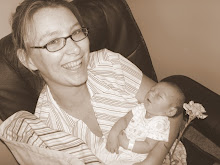 As mothers, we know that our babies are going to cry, this is just a fact of life. However, sometimes we just can’t figure out what they are crying about. It’s enough to make a new mother quite anxious, but not enough to speed dial the doc every five minutes.
As mothers, we know that our babies are going to cry, this is just a fact of life. However, sometimes we just can’t figure out what they are crying about. It’s enough to make a new mother quite anxious, but not enough to speed dial the doc every five minutes. This article will explore the view from an often underutilized resource; your chiropractor. Our friends at the Chiropractic Health Center (Doctors Mary, Adam, and Zach Jameson, D.C., P.C.) have put together a few points to remember next time your infants physician says that “babies just cry”.
SUBLUXATIONS AT BIRTH
Chiropractors have a term for misalignments: subluxations. A vertebral subluxation is a misalignment of the bones that protect the spinal cord. It's a leak in the roof or a kink in the wiring of your nervous system. The severity of the subluxation can vary, and there are a number of potential contributing factors that can be physical, emotional, mental, or chemical. The subluxation can be caused by any number of incidents, from birth trauma to an auto accident to simple repetition or over-use.

Over the years, chiropractors have analyzed and in many cases corrected subluxations caused at birth. Many birth injuries go undetected and are evaluated years later. Spinal cord and brain stem injuries are common in births that involve forceps and vacuum extraction. The birth process even when natural, and in controlled conditions, is potentially traumatic. During the pushing stage of labor, the spine, particularly the cervical spine may be injured, as the fetus is compressed and pushed down the birth canal.
PRIMARY CURVE
Babies are born with one spinal curve known as the primary curve. This C shaped curve is carried over from the uterus. The early days and months of a child's live are very important in the development of the secondary curves of the spine. Until about three to five months the average child is unable to hold its head with complete control and is vulnerable to the stresses that may be applied to the neck during delivery, parental shaking, or trauma.
EXERCISE HELPS TO DEVELOP THE "C" CURVE
One of the best exercises for the baby is on its stomach; in this position the infant can lift its head and develop the C curve of the neck. Crawling helps develop the curve of the lower back. The lack of sufficient crawling is responsible for a weakness of the spine, which leads to childhood subluxation.
BABY CONTRAPTIONS MAY INJURE SPINAL DEVELOPMENT
Unfortunately many parents for the sake of convenience place their infant in contraptions that force him or her into an upright position before their spine is ready. This includes wind-up swings or jumpers or any other holder, which allows the infant to stand or walk before the spinal curves are formed. Most baby holding devices hold the baby's spine in the C position and prevents the formation of the lumbar secondary curve. Abnormal curves are easier to correct in the first year of life. The posture the infant is forced to assume, if unnatural to her or his spinal development could cause harm to their health for the rest of their lives.
LOWER RESISTANCE TO INFECTIONS
In a study of 1,250 babies who were examined five days after birth, the investigator found that of 211 who suffered from health problems, which included tonsillitis, vomiting, hyperactivity and sleepiness, subluxations had caused the clinical symptoms (Manuelle Medizin, 1987;25:5-10). Some subluxations alter the normal physiological response of the nasal cavity to infections, which may result in infection in the ears, nose and throat.
COLIC
In a recent article written by Deb Donovan and Bob VanMetter:
Almost all infants develop periods of fussiness. This is often referred to as colic. It has been defined as periods of irritability, fussiness and inconsolable crying in a healthy baby (which lasts for at least 3 hours a day, at least 3 days a week). But colic is actually a default diagnosis. Pain from sources other than the gastrointestinal tract can be improperly diagnosed as colic. If a baby is crying inconsolably, it is very difficult to know if he is actually suffering from a digestive disturbance. Since many subluxations in infants are in the upper cervical area, there is a strong possibility, especially when there has been a history of birth trauma, that these babies are suffering from head and neck pain due to spinal subluxations in this area.
In a study looking at babies receiving chiropractic care for colic, 94% saw improvement in their baby's behavior within 2 weeks of initiation of care. A little over half of these babies had already been unsuccessfully treated, usually by pharmacological means (Klougart et al., 1989). Another study found 91% of babies experienced a reduction in colicky behavior following as little as two chiropractic adjustments (Nilsson, 1985).
CONCLUSION
As with any kind of therapy, make sure that you and your physician are in agreement before you take action. Whatever you decide, at the Chiropractic Health Center we know that people of all ages benefit from regular Chiropractic care. As a member of the American Pregnancy Association, we would like to help you take the first step toward a happier, healthier way of living. We offer Chiropractic adjustments, Nutritional counseling, Acupuncture, Massage, Rehab, Supplements, and Natural products for the care and comfort of your body. We would love to show you ways to live a greener lifestyle, not just by changing the products you buy, but by altering the way you care for your body.
MARY E. HASLEY, D.C., P.C.
ADAM JAMESON, D.C., P.C.
ZACH JAMESON, D.C., P.C.


